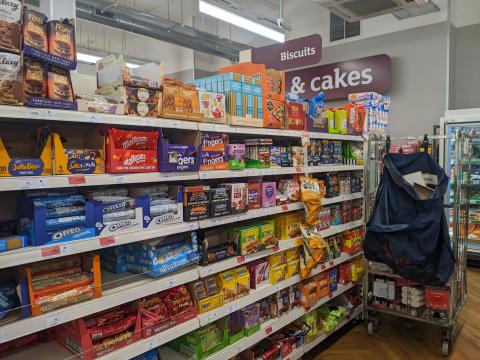06 April 2023
Happy 5th birthday to the Soft Drinks Industry Levy!

Today we're marking a special occasion. The Soft Drinks Industry Levy – or the "sugar tax" as it is more commonly known – is turning five years old.
Its introduction was the result of years of campaigning from stakeholders across the sector, and of support from MPs across the political spectrum. The policy was a historic campaigning win.
To celebrate the SDIL’s success, The Food Foundation have joined Sustain, the Obesity Health Alliance, British Heart Foundation, and Impact on Urban Health to send a Thank You card to MPs.
And you can listen to our special podcast episode which marks the occasion here.
So what exactly is the Soft Drinks Industry Levy?
The Soft Drinks Industry Levy is designed to reduce the amount of sugar that we are all consuming from soft drinks. It is a tax on the production and import of soft drinks that contain added sugar and is designed to be paid by businesses (not by consumers) at a rate that depends on the amount of sugar that products contain.
Drinks which contain 8g or more sugar per 100ml are subject to the highest rate of tax. There is a lower rate for drinks which contain 5-8g sugar per 100ml. And drinks which contain less than 5g sugar per 100ml are not subject to the levy at all.
This means that if manufacturers change the recipes of their products to contain less sugar it is possible for them to pay less tax, or even to escape the levy completely.
How was it meant to work?
There were several ways in which the Soft Drinks Industry Levy was intended to reduce sugar consumption:
- Firstly, it was meant to encourage soft drinks companies to reduce the amount of sugar in their recipes (this is called reformulation), making the overall choices on the supermarket shelf healthier.
- Secondly, it was meant to incentivise soft drinks companies to reduce the portion sizes of drinks that they had not reformulated, so that they could continue to sell them at the same price to their customers.
- Thirdly, it was meant to encourage soft drinks companies to more heavily promote the healthier products in their ranges.
- And finally – by making more sugary drinks relatively more expensive compared with less sugary drinks – it was meant to encourage consumers to switch towards buying healthier drinks which contain less sugar.
In addition, the SDIL was meant to raise revenue which could be spent on other policies to promote health.
And is it actually working?
It is! Since SDIL’s introduction in 2018, several academic teams across the UK have been working to review its impact. And excitingly, a lot of evidence is now emerging that it is working.
We now have strong evidence that SDIL is a win-win policy for our health and for businesses:
It has reduced the amount of sugar in soft drinks: Products subject to the SDIL contained on average just 2.1g sugar per 100ml in 2020 compared with 3.8g per 100ml in 2015 - a decrease of 46.0%.
It has resulted in us buying less sugar: We bought 46,400 tonnes less sugar through soft drinks that are subject to the levy in 2020 compared to 2015 – a decrease of 34.3%.
It has reduced our consumption of sugar: The Levy is associated with reducing sugar consumption in drinks by 30g per household per week.
And it has potentially even lowered obesity rates: Emerging evidence suggests that the introduction of the Levy has been associated with 5,000 fewer cases of obesity amongst 11-year-old girls.
And it has done all that without impacting on soft drinks sales (which have actually risen since the levy was introduced), and with no negative long term effects for soft drinks companies, both in terms of stock market performance and domestic turnover.
In addition, over £1.3 billion has been raised for the Exchequer in revenues from the levy. This money is being used to provide government funding for primary school sports and PE, school breakfasts and holiday activity programmes.
In contrast, the voluntary Sugar Reduction Programme – which ran for five years between 2015 and 2020 and encouraged businesses to voluntarily reduce sugar levels in various food categories – achieved only a 3.5% reduction in average sugar levels across the categories which were targeted.
Even the category that performed best in the voluntary programme – breakfast cereals – saw a reduction of only 14.9% - much lower than the sugar reductions achieved via the SDIL.
So how can we build on the SDIL’s success?
Though it is exciting to see a flagship policy working so well, we know that much more still needs to be done to reverse rising obesity rates.
As political parties begin to develop their manifesto positions ahead of the UK’s next General Election, The Food Foundation is urging them to look to the success of the Soft Drinks Industry Levy as a model for future obesity and health policies that target the food industry.
It shows clearly how effective mandatory measures can be in driving rapid change.
We would like to see the Government developing new fiscal policies that encourage businesses to reformulate other food and drink categories and that help to rebalance the cost of more healthy and less healthy foods.




